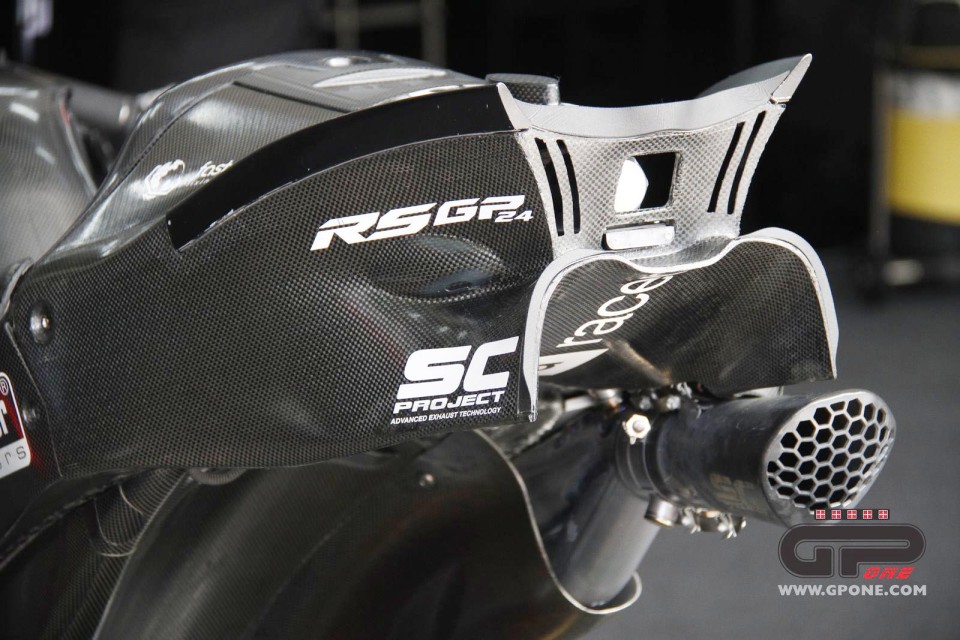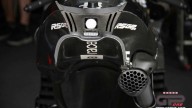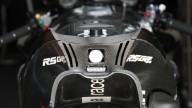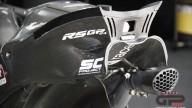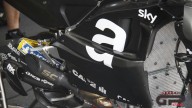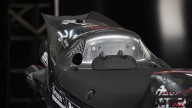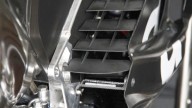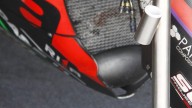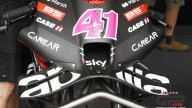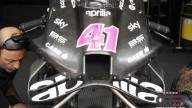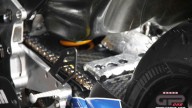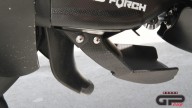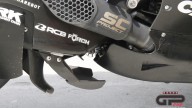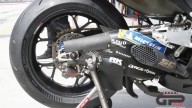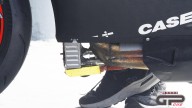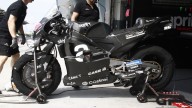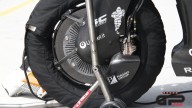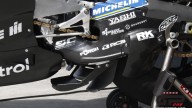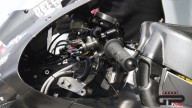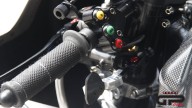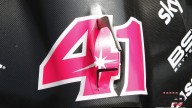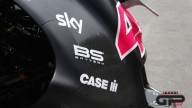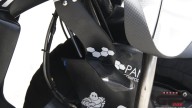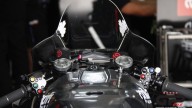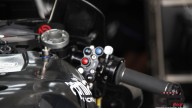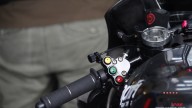The first to break the Pandora's box of aerodynamics was Ducati, even if we are talking about modern times because the curiosity to make the wind work in favour of the motorbikes had even touched MV Agusta. Today, however, the rest of the motorcycle manufacturers have adopted the same strategy and spend the same time used in the test bench room, in the wind tunnel.
Of all the most active recently is undoubtedly Aprilia which has among its ranks Marco De Luca, whose official position is Head of Vehicle Department.
Graduated in aerospace engineering, his past includes McLaren, Mercedes, where he was the head of aerodynamics, Lamborghini, Ferrari and Benetton. And like many he began his career at Minardi. All teams in which he was responsible for making... the air work.
“I brought some experience in my own small way - said De Luca - our front wing resembles that of single-seaters. Unfortunately the features cannot be used extensively, there are limitations. But this doesn't matter, rather it is important how the data is used, the method, how it is analysed and used for what a motorbike needs. Our RS-GP is a bike that cools more, that has more aggressive ergonomics, it is a bike that has weight advantages and whose stiffness has evolved in a direction that we think is successful. We have mass distribution advantages. In short, it doesn't just have aerodynamic advantages, it's a combination of things."

Certainly currently Aprilia has even surpassed Ducati, in terms of creativity, from this point of view, although it must be said that it is quite a battle between the two.
What is certain is that there is not one inch of the RS-GP that has not been analysed and studied to obtain some advantage, be it downforce or otherwise.
Looking closely at the prototype of Aleix Espargarò and Maverick Vinales it is easy to realize this and the impression is that of being in front of a Formula 1 car, from the period in which they began to study the importance of aerodynamic details on the bodywork and deflectors and fins began to appear.
No advantage, even infinitesimal, has been overlooked, because in the end it is the thousandths that add up and make the tenths. At that point the single-seaters lost their purity, given by a smooth body with two spoilers, one at the front and one at the rear, to become what they are today: a puzzle of aerodynamic elements.
Let's take two details of the RS-GP. The first: the Batman tail, immediately visible at a glance, at the rear has the appearance of an extractor (or diffuser) profile. We know its importance in the world of four wheels because, by speeding up the escape of hot air under the car body, it helps to increase downforce due to the Venturi effect. In F1 they even blow hot unburned gases into it to increase the effect. Now we doubt that on the Aprilia that shape could have the same importance, but unless it was introduced ‘for show’, the data collected must have had a certain relevance.

The second detail is the infamous 'spoon', introduced by Ducati, with the excuse of cooling the rear tyre. If you look at the one on the Aprilia now it is clear that it serves to generate load, given that there is a deflector immediately behind it.
But we could continue with the sides of the fairing. The RS-GP was the first to use the 'chest' shape. A design invented to give that extra thousandth of grip when the bike is leaning.
Making the air work in your favour, this is the purpose of every detail, even when the air is used to cool. As in the case of the small Naca duct right on the final part of the belly of the fairing, in front of the spoon.
As De Luca correctly says using almost an ethical expression: it is a concert of things.
If you look at the Aprilia from the side you can clearly see how the idea is to make the aerodynamics work from the front fork to the tail, without interruption, and since this could make the bike more challenging to manoeuvre, you notice the space between the front wheel and the beginning of the fairing is tapered to the maximum, to improve handling when changing direction as Paolo Bonora explained to us last season.
In short, MotoGP is no longer a bike as we knew it. No longer the Moto Guzzi torpedo with the 'bell-shaped' fairing, nor those with the 'dolphin-shaped' fairing. It is a different object completely, and not only aesthetically because the shape, at certain speeds, is substance and influences riding. Because of this, today, riders ride how they ride. It's not just a matter of better tyres and suspension. Compare a corner lean from a champion from the ‘90s with those of current riders: they make Roberts and co. look like amateurs. After the knee on the ground, the elbow, then the shoulder. The motorbike has become a sporting tool and whoever rides it, in addition to talent, must possess uncommon sporting skills. Like Batman, basically.



